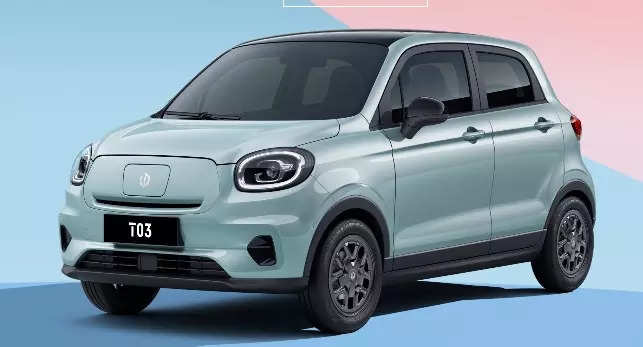
New Delhi: The last couple of days have seen India, China and the US make big ticket headlines.
The week began with news of China emerging as the largest trading partner of India with USD 118.4 billion worth of bilateral trade in 2023-24. As a result, it went past the US whose two-way trade with India was USD 118.3 billion.
India and China have been at loggerheads since 2020 when the pandemic had the world on its feet and the Chinese army exploited this opportunity to get aggressive along the Indian border. Clashes broke out between the troops and the two countries have pretty much been maintaining a stiff and formal rapport since then. It is in this backdrop that the news of China again becoming India’s largest trading partner after a there year break was interesting.
May 14 saw the US impose a 100% tariff on Chinese-made electric vehicles, a four-fold jump from 25% which was the prevailing rate thus far. Beyond this, tariffs on lithium batteries were hiked to 25% from 7.5% and from zero to 25% on critical minerals. Import duty levies on Chinese solar cells and semiconductors were doubled to 50%.
The most significant takeaway was EVs where the higher 100% tariff will ensure that no Chinese auto brand will contemplate a US entry in the near-term. There is absolutely no question that the move is protectionist and is intended to keep the American EV industry reasonably protected from Chinese rivals. How this will affect brands like General Motors and Ford in China, by way of retaliation, remains to be seen.
Election time
This move to hike tariffs was not entirely unexpected with the US heading for elections in the coming months and Joe Biden has clearly pulled the rug from under his rival, Donald Trump’s feet. The former US President’s tenure is remembered for its tariff wars against China where relations with the US went for a toss. Biden has also adopted a hawkish China policy but the latest move to impose such hefty tariffs on Chinese EVs was quite brutal even by his standards.
May 14 also saw another news break relating to China where its local auto brand, Leapmotor, made down that it would enter the Indian market during the last quarter of this fiscal. The Chinese company is 20% owned by Stellantis which has facilities in India to produce Citroen and Jeep brands. Leapmotor International, the 51:49 alliance been Stellantis and Leapmotor, is the global face which will see the Chinese auto brand introduce its EVs across Europe and Asia.
Three important announcements made in two days with China being the recurring theme cannot be dismissed as a mere coincidence. It is a clear message that the country continues to hold all the key aces even while it is perceived as the big bully and formidable ogre of the new global order.
In the arena of EVs, where it has the US and Europe rattled, China is miles ahead of the rest in costing, competencies, skills and scale. Local brands like BYD are now world beaters and have given established players like Tesla a jolt. Prior to the EV invasion, Chinese brands like Geely, SAIC and Great Wall Motors had already made known their global ambitions with factories established in ASEAN, Latin America and India (where SAIC set up shop in 2017).
Surging ahead
China is already the world’s largest exporter of cars and this will get a further fillip with its prowess in EVs. The fact that the US has virtually shut its doors by way of hefty tariffs is hardly going to be a deterrent. “China will now pull out all the stops and spread its presence in Latin America, Africa and the Asia-Pacific region,” says a top auto industry official.
Europe is also on its radar with some announcements already made on new plants but there could be some headwinds in the form of hefty EU tariffs on Chinese car imports. These may not be as stratospheric as the levels in the US but can still upset the costing equations of a China-made EV versus its European counterparts.
Where does India stand in this new tug-of-war that has the potential to create more geopolitical tensions going forward? At one level, the Centre is firm about not allowing Chinese companies an easy drive when it comes to investments. It was this tough stance, in the aftermath of the border tensions at Ladakh, that saw Great Wall Motors shelve its plans of acquiring the General Motors plant near Pune. It also led to Changan Automobile bidding adieu just when it was ready to kick off its India innings.
Both these Chinese companies were emboldened by the success story of SAIC which had bought out GM’s facility in Gujarat and launched the Hector in record time. Customers made a beeline for the SUV and the fact that SAIC had front-faced its India brand as MG Motor also ensured that there would be no Chinese connection.
Valuable lessons
Perhaps, the company had learnt from its earlier outing with GM soon after the Lehman crisis when it got into a 50:50 alliance for India and was keen on launching some of its own products from the Wuling stable back home in China. This did not quite yield the desired results in terms of market acceptance in India and SAIC would have quickly realised that it made more sense to have another brand to carry forward its global drive. MG Motor, the British brand which it had acquired some years ago, emerged the best solution.
Yet, when political tensions again started escalating, SAIC was not allowed to make fresh investments on its own and had to forge an alliance with a local player (JSW Group) to continue with its Indian script. The other Chinese brand in India, BYD, will also need to look out for a strong and acceptable partner, in the eyes of the Centre, to keep its Chennai plant going.
In the case of Leapmotor, there is no clear indication if it will have its own brand out in the Indian market or allow it to be subsumed by Citroen which is part of the Stellantis kitty. “Right now, everything looks completely vague and unclear. This is another Chinese brand that has apparently been given permission to be sold in India. Is the go-ahead a result of the Stellantis presence?” asks an industry official.
Warming up?
There is also some concern that India is “slowly cosying up to the Chinese” given the latest data on bilateral trade and the fact that there is a lot more traction now in the EV space. As a top automotive executive puts it, “China is the clear leader in EVs and India has also identified electric as the best option for its automakers. In this backdrop, it makes more sense to be pragmatic about one’s strengths and weaknesses despite the obvious political discomfort that will continue to prevail.”
No concrete answer is going to be forthcoming till June when the results of the national elections are declared and a new government is in place at the Centre. China could also be watching the political scenario in India with great interest while plotting its next move in EVs. Even if the US has given it the cold shoulder, China is not going to let this derail its objective of being the world’s leading player in EVs as it sets about scouting for greener pastures. India will remain high on its priority list for sure.















